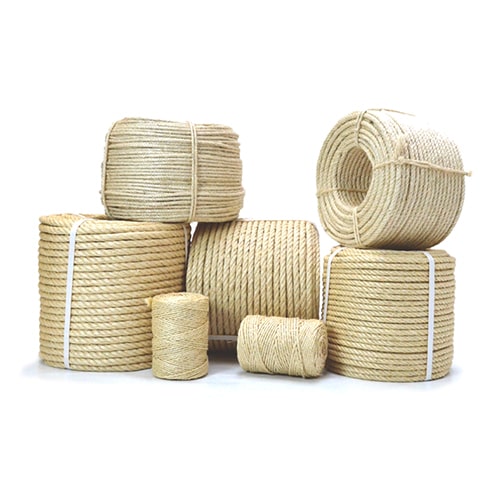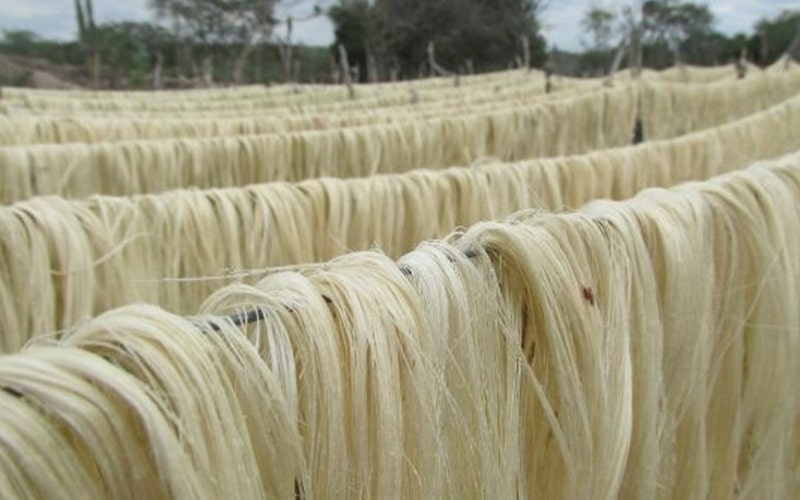Sisal, (Agave sisalana), a plant of the family Asparagaceae and its fibre, the most important of the leaf fibre group. The plant is native to Central America, where its fibre has been used since pre-Columbian times. Commercial interest in sisal was stimulated by the development of the machine grain binder in the 1880s, which brought a demand for By the late 1930s sisal was being cultivated in Kenya, Mozambique, Angola, Madagascar, and elsewhere in Africa and the Philippines, Taiwan, Brazil, Venezuela, Indonesia, and Haiti.
THE PLANT
The plants stalk grows to about 90 cm (3 feet) in height, with a diameter of approximately 38 cm (15 inches). The lance-shaped leaves, growing out from the stalk in a dense rosette, are fleshy and rigid, with grey to dark green colour. Each is 60-180 cm (2-6 feet) long and 10-18 cm (4-7 inches) across at the widest portion, terminating in a sharp spine. Within four to eight years after planting, the mature plant sends up a central flower stalk, reaching about 6 metres (20 feet) in height. Yellow flowers, about 6 cm (2.5 inches) long and with an unpleasant odour, form dense clusters at the ends of branches growing from the flower stalk. As the flowers begin to wither, buds growing in the upper angle between the stem and flower stalk develop into small plants, or bulbuls, that fall to the ground and take root. Like other Agave species, the old plant dies when flowering is completed.
Sisal ropes are one of the strongest
and can last a
LIFETIME
THE PRODUCT
Sisal fibre is made from the leaves of the plant. The fibre is usually obtained by machine decortication in which the leaf is crushed between rollers. The resulting pulp is scraped from the fibre, and the fibre is washed and then dried by mechanical or natural means. The lustrous fibre strands, usually creamy white, average 100 to 125 cm (40 to 50 inches) in length and are fairly coarse and inflexible. Sisal fibre is especially valued for cordage use because of its strength, durability, ability to stretch, affinity for certain dyestuffs, and resistance to deterioration in saltwater. The fibre is very similar to that of the related henequen (Agave fourcroydes). Brazil is the largest producer of sisal producing 113,000 tonnes.


USES
Sisal ropes and twines are widely employed for marine, agricultural, shipping, and general industrial use, and the fibre is also made into matting, rugs, millinery, and brushes. Sisal is preferred for these purposes due to its durability, strength, ability to stretch, resistance to deterioration in saltwater, and affinity for certain dyestuffs.


Comments are closed.